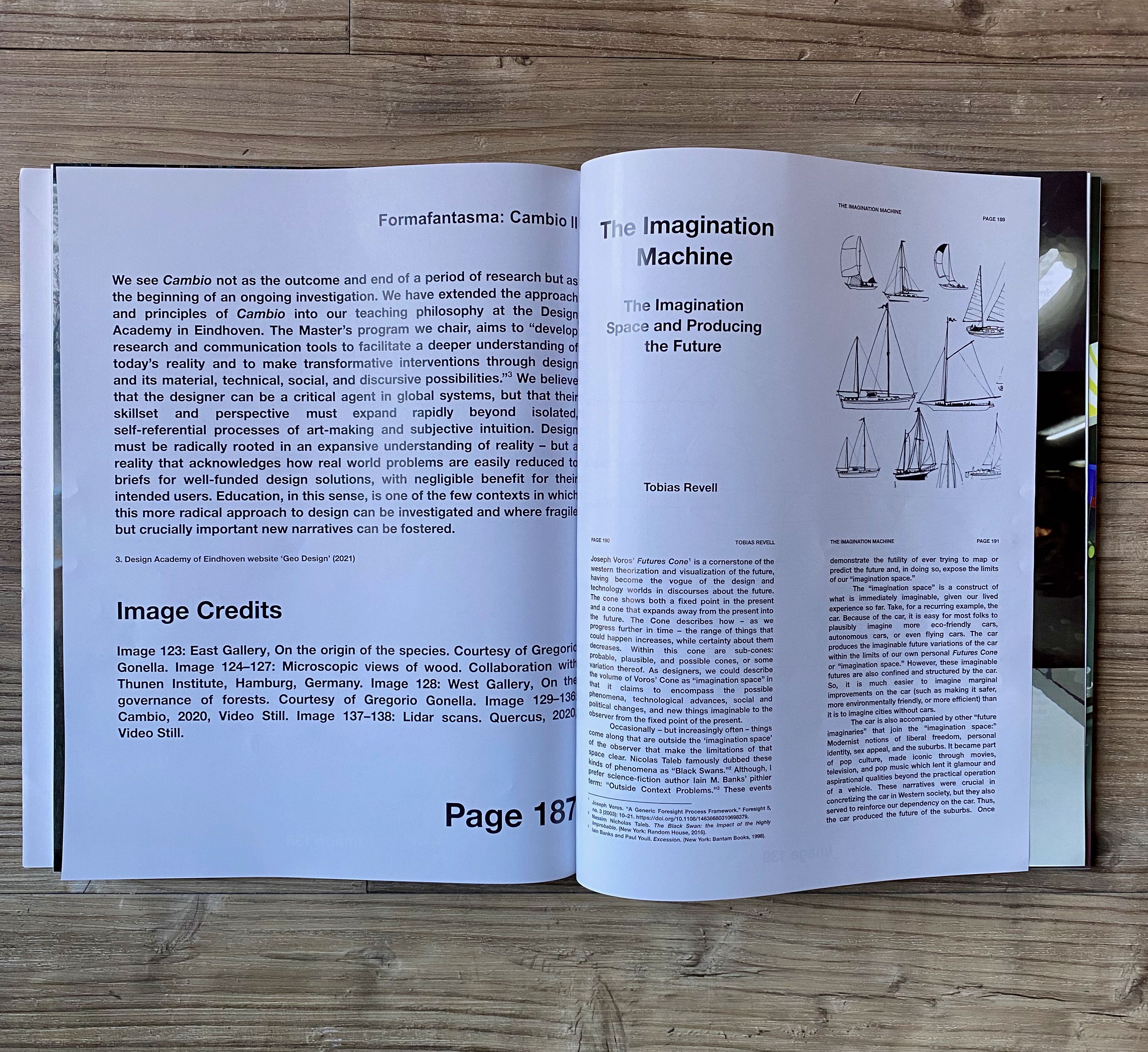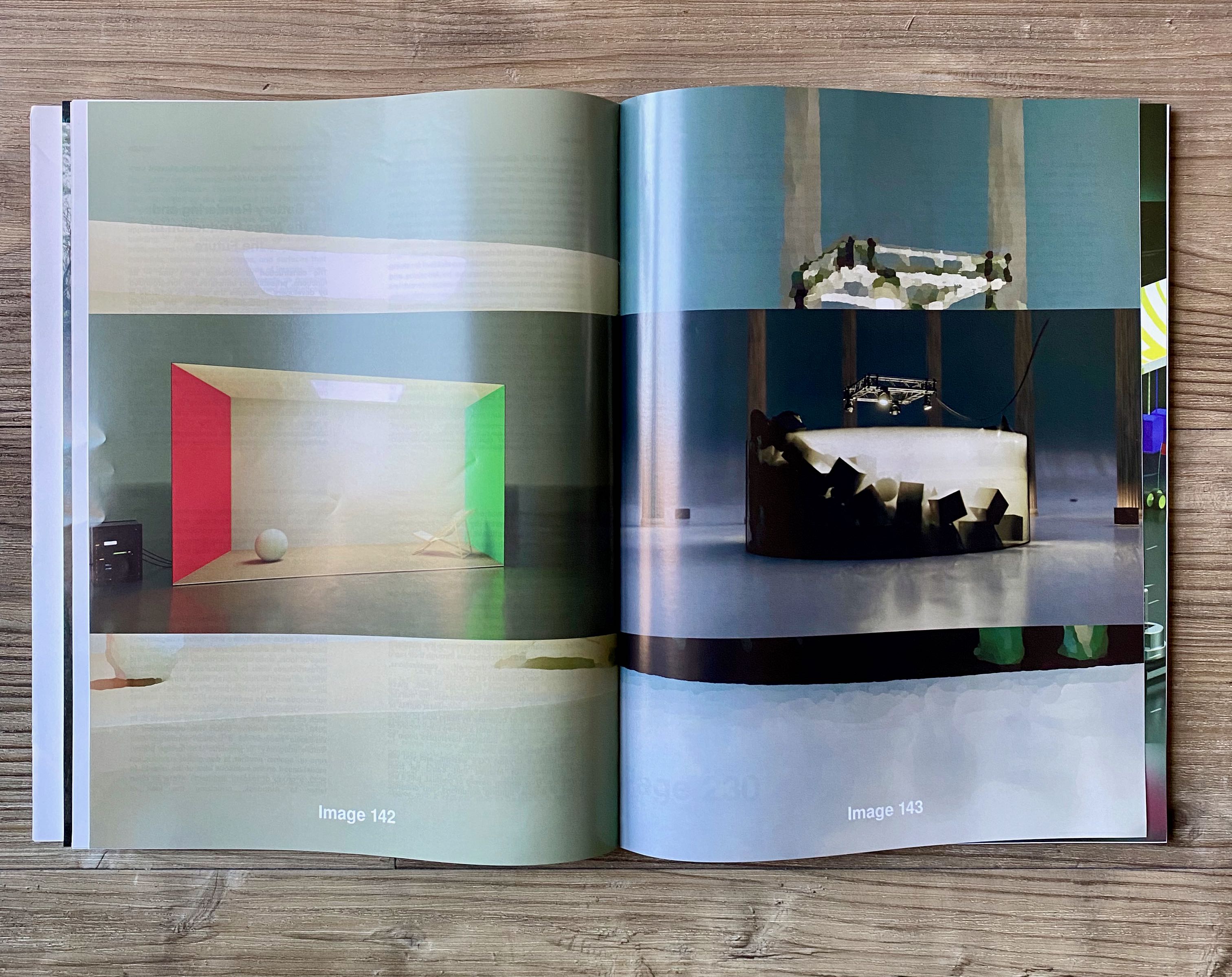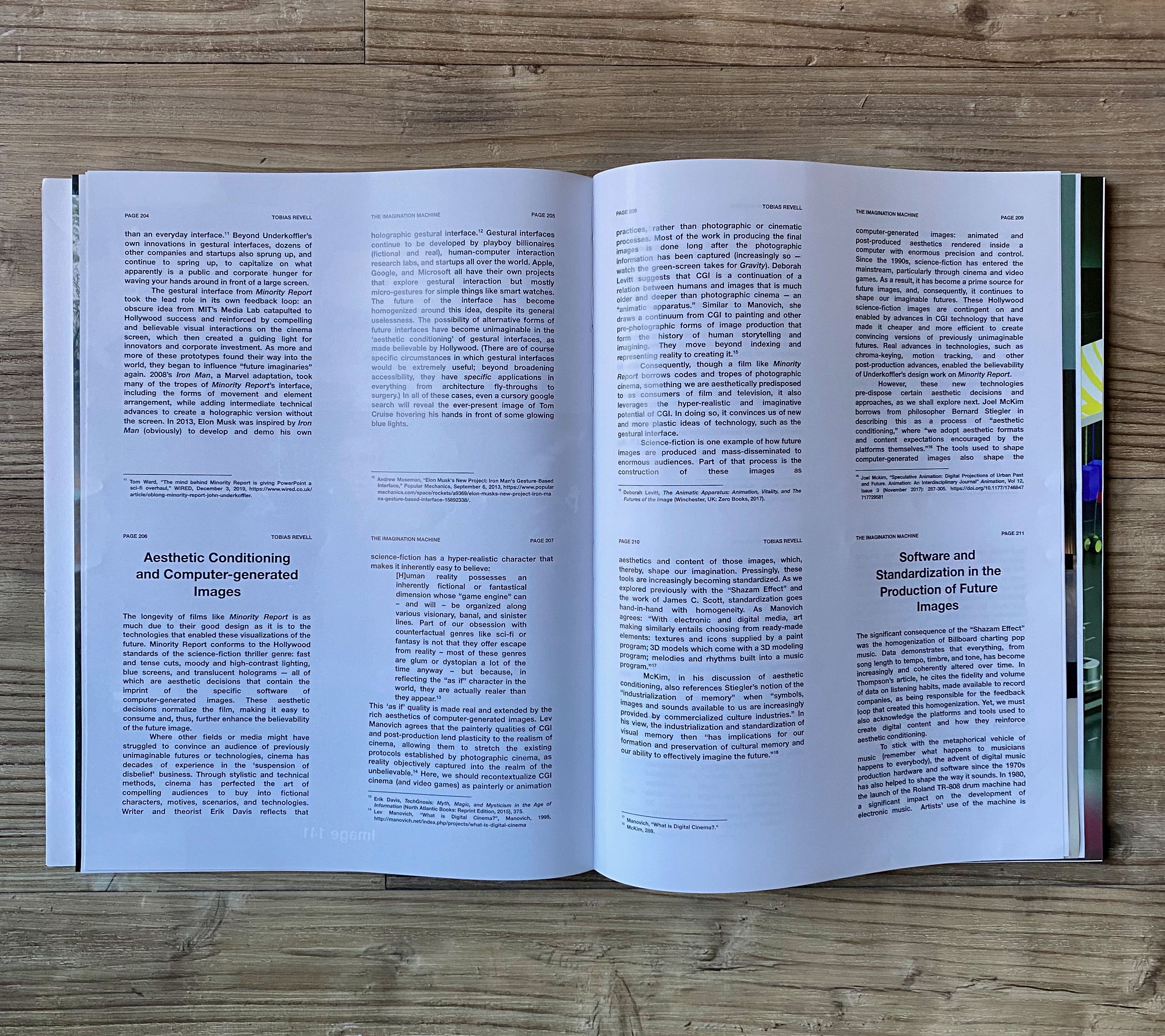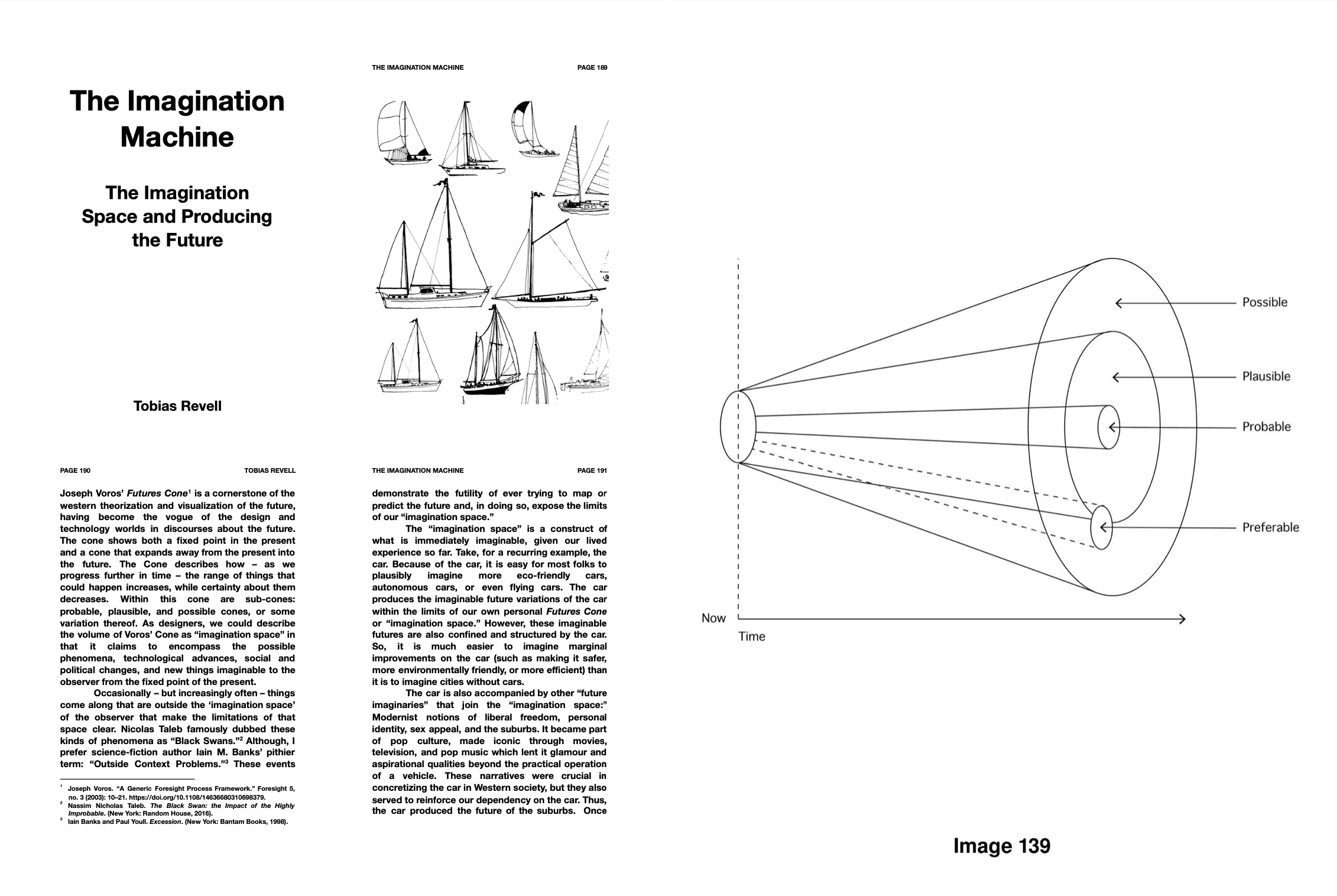




The Imagination Machine
Essay for Yale Architecture Journal Perspecta 54 examining the relationship between imagination and expectation, science fiction and software.
The imagination space is a construct of what is immediately imaginable given our lived experience so far. Take, for a recurring example, the car. Because of the car it is easy for most folks to plausibly imagine more eco-friendly cars, autonomous cars, even flying cars. The car produces the imaginable future variations of the car within the limits of our futures cone or imagination space. However, these imaginable futures are also confined and structured by the car so that it is much easier to imagine marginal improvements on the car such as making it safer, more environmentally friendly or more efficient than it is to imagine cities without cars.
The car is also accompanied by other future imaginaries that join the imagination space; modernist notions of liberal freedom, personal identity, sex appeal, the suburbs. It became part of pop culture, made iconic through movies, television and pop music which lent it glamour and aspirational qualities beyond the practical operation of a vehicle. These narratives were crucial in concretising the car in western society but also served to reinforce dependency on the car; the car produced the future of the suburbs but once people moved to the suburbs the future of the car was reproduced. The thing to takeaway from this and the futures cone is that things and ideas produce futures and structure our imagination space. We imagine through and with the car.
In discussing future production here, I’m referring to the way images and imaginations of the future are produced rather than the technical realisation of those images and imaginations. In this context the future is an ever-receding set of imaginable realities rather than a thing being brought into being. We’re interested in how the ideaof, say, the flying car is produced and disseminated rather than the technical means of its production.
The ways that images of the future are created and distributed are incredibly important in shaping our perception of the future as well as our ability to critically challenge it. In 2020 we find ourselves at the beginning of an industrial revolution of semi-autonomous image production. In this revolution, the process of image creation and dissemination is increasingly automated through technologies from computer-generated imagery (CGI) software to machine learning. These technologies enable the rapid production of futures which go on to shape the imagination space of those that encounter them. Through a feedback loop of aspiration and expectation, images of the future shape our imagination and our imagination shapes them but in doing so we end up with homogenised futures that reinforce present biases and expectations rather than open up genuinely new possibilities.